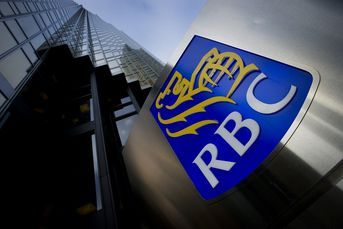Wealth management a growing force in bank fortunes
Third-quarter earnings reports show that once again, wirehouses are driving revenue at the giant banks that own them.
The growing importance of wirehouses to the top line of the giant banks that own them was underscored once again this week as three of the four financial institutions reported third-quarter earnings.
Bank of America Merrill Lynch, Wells Fargo Advisors and Morgan Stanley Wealth Management continued to deliver a growing portion of the overall company revenue as executives at their corresponding banks say that they are benefiting from a growing consumer demand for managed money. The fourth major wirehouse, UBS Wealth Management Americas, has yet to report results.
One of the strongest examples, Morgan Stanley Wealth Management, which is part of Morgan Stanley & Co. Inc., now approaches almost half, or 42%, of the revenue of the firm compared with 35% in 2009. The brokerage unit, with around 16,300 advisers, delivered $3.8 billion in the most recent quarter compared with the $4.5 billion the firm’s bankers and traders brought in from institutional securities, underwriting and asset management.
“Our wealth management business continues to have momentum with growing profitability from a secular trend toward managed money,” said Ruth Porat, Morgan Stanley’s chief financial officer, on a conference call on Friday discussing third-quarter earnings.
For the first time, Bank of America began including the statistic on global wealth management as a percent of revenue as part of a quarterly email to media highlighting earnings results in the wealth unit.
The Global Wealth and Investment Management division, which includes more than 14,000 advisers between Merrill Lynch and the private bank, U.S. Trust, brought in $4.7 billion in revenue for the third quarter, or 22% of Bank of America’s overall revenue. That was up from 13.5% in the third quarter of 2009.
“Notably, GWIM’s percent of Bank of America revenue increased….demonstrating the growth of wealth management business as [an] important part of the company,” spokeswoman Susan McCabe said in an e-mail.
Wells Fargo Advisors, which has around 15,160 advisers, brought in almost $3.6 billion in revenue in the third quarter, or 17% of the $21.2 billion the Wells Fargo & Co. Inc. earned in total. Wells Fargo Advisors comprised around 15% of overall earnings in the third quarter of 2011. The company acquired most of its advisers from Wachovia Corp. in 2008.
Wealth management has come into the spotlight as investment banking and institutional business face increasing pressure from regulations such as the Dodd-Frank financial reform law, according to Louis Harvey, president of research and certification firm Dalbar Inc.
“The banking side of the business is under enormous pressure,” he said. “Washington would be more inclined to be supportive of [wealth management].”
That growth also comes in spite of the fact that the wirehouses added much of their wealth management business during or after the financial crisis. Wells Fargo picked up most of its brokers from Wachovia Corp., which it acquired in 2008. Bank of America acquired Merrill Lynch and its “thundering herd” in 2009 and Morgan Stanley more than doubled its broker workforce when it acquired Smith Barney in 2009.
Those acquisitions in most cases were rocky for many of the firms and required significant investment in terms of retention deals, recruiting compensation and technology.
Morgan Stanley, for example, suffered a steep decline in headcount after it rolled out a new technology platform in 2012 that the Smith Barney brokers found unwieldy. In a presentation in June, James Gorman described the phases after the merger as “crisis,” followed by “fragility,” “healing,” and now “performance and growth.”
While wealth management is contributing more to the overall revenue pie, banks are looking to extract greater profits from it. Morgan Stanley Wealth Management, which recently hit a goal of 22% pre-tax profit margins, was still well below the 27% pre-tax margin in the institutional securities business.
Wells Fargo’s pre-tax profit margin was 17%, below the overall 27% margin for company-wide results.
Bank of America Merrill Lynch, the most profitable of the wirehouses by pre-tax margin, was more comparable to the banking units and reported a 27% margin for the third quarter.
Learn more about reprints and licensing for this article.






